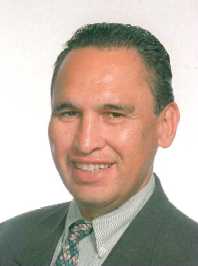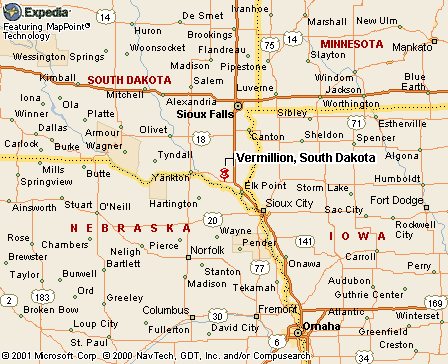|
|
Canku Ota |
|
|
(Many Paths) |
||
|
An Online Newsletter Celebrating Native America |
||
|
June 29, 2002 - Issue 64 |
||
|
|
||
|
Columnist Encourages Native American Students to Tell Their Stories |
||
|
by Kaeleen McGuire, Jill Cadreau
and Andrea Hanks
Freedom Forum's American Indian Journalism Institute |
||
|
credits:Kaeleen
McGuire (Umatilla), Jill Cadreau (Sault Sainte Marie Tribe of Chippewa)
and Andrea Hanks (Navajo) attended the Freedom Forum’s American
Indian Journalism Institute. AIJI students Clem Crazy Thunder (Oglala
Lakota), Lisa ShortBull (Rosebud Lakota), Daniel Snowball (Ho-Chunk),
April McGill (Covelo) and April Hale (Navajo) contributed to this report.)
|
 VERMILLION,
S.D. — Syndicated columnist George Benge urged Native students to
pursue careers in journalism, where American Indians are underrepresented
and their stories are often inaccurately told. VERMILLION,
S.D. — Syndicated columnist George Benge urged Native students to
pursue careers in journalism, where American Indians are underrepresented
and their stories are often inaccurately told.
Native journalists have the ability to "tell it from the heart and to tell it from the head," Benge, a Cherokee, told a group of Native college students attending the Freedom Forum's American Indian Journalism Institute at the University of South Dakota. "We are great storytellers ... in the tradition of journalism," said Benge, a Gannett Co., Inc., news executive. The "tradition of storytelling that flows through our veins is journalism." Benge writes a column about American Indian and diversity issues for Gannett News Service. When he started in the newspaper business 30 years ago, he said, he was one of the few Native reporters — perhaps the only one — in mainstream journalism. He encouraged more Indians to become journalists because of the cultural understanding that they can bring to a story. Mainstream reporters "don’t know how to talk to Indians, they don’t know anyone on a reservation," he said. "You are in a unique position because you understand the culture." Indians have "a unique understanding" of many of the important Native stories that are commonly overlooked or misreported by the mostly non-Indian journalists in mainstream media, he said. "Now is the time to tell the story," he said. These stories include what he called the attack on sovereignty by non-Indians, "genocide by bureaucracy," health care, the loss of Native languages, tribal economic "empowerment," the digital divide on reservations, and casinos — "the new stereotype." Natives understand these issues "intuitively," he said. "You lived the life. You walked the walk. You talked the talk." Benge added: "I've been called a 'redskin,' so when I write about the Washington Redskins (mascot issue), it's personal." He told the students he was proud to look at a room full of young Natives with an interest in journalism. "You are blessed to be partaking in the profession of journalism," he said. "This is a great way to do something important in your lives, for other Native Americans and for the American people."
|
|
|
||
|
|
||
| Canku Ota is a free Newsletter celebrating Native America, its traditions and accomplishments . We do not provide subscriber or visitor names to anyone. Some articles presented in Canku Ota may contain copyright material. We have received appropriate permissions for republishing any articles. Material appearing here is distributed without profit or monetary gain to those who have expressed an interest. This is in accordance with Title 17 U.S.C. section 107. | ||
|
Canku Ota is a copyright © 2000, 2001, 2002 of Vicki Lockard and Paul Barry. |
||
 |
 |
|
|
The "Canku Ota - A Newsletter Celebrating Native America" web site and its design is the |
||
|
Copyright © 1999, 2000, 2001, 2002 of Paul C. Barry. |
||
|
All Rights Reserved. |
||
